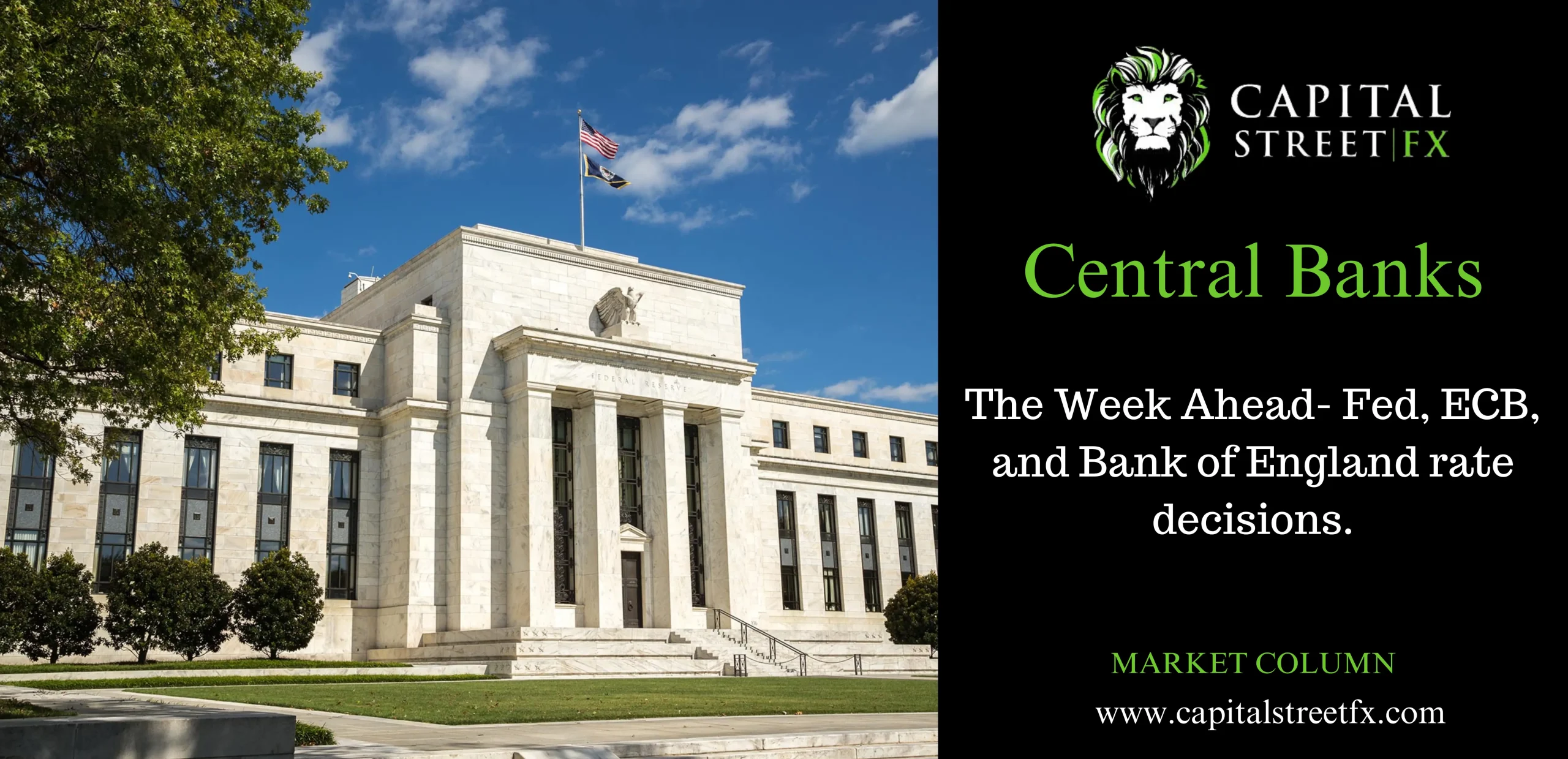The Week Ahead- Fed, ECB, and Bank of England rate decisions.
Fed decision- 13/12-
When the Federal Reserve opted to keep rates steady in November, there was a chance for one more rate hike in line with the initial projection of 5.6% for the year’s end. However, recent weeks have seen this likelihood dwindle, despite Fed Chair Jay Powell’s earlier statements. Powell hinted at possible rate cuts in the coming months, and while the Fed has a year-end target of 5%, market sentiment suggests the possibility of surpassing this, with the first increase expected in the summer. Powell, in November, maintained that no decisions had been made, but opinions within the Fed are shifting, as seen in hawkish remarks by board member Christopher Waller. The recent bond market reaction raises concerns, as it may loosen financial conditions enough to prompt an inflation rebound. While another rate hike is not anticipated, the FOMC may approach its dot plots cautiously to avoid appearing dovish.
ECB decision- 14/12-
The impression lingers that the ECB made a misstep in September by raising rates, potentially concluding the current cycle. Despite the Bank of England and the Federal Reserve opting to maintain rates, the ECB, in October, acknowledged downside growth risks while noting persistently high inflation. Recent statements from ECB members, including Isabel Schnabel, suggest a recognition that the ECB is likely finished with rate hikes, citing surprise at the rapid deceleration of inflation. Economic data since June supports this stance. Several Governing Council members, such as France’s Villeroy, anticipate lower rates in 2024, with markets pricing in cuts as early as April. Notably, Villeroy recently declared the end of rate hikes based on current data, aligning with the perception of inflation returning to target. Despite a Q3 contraction in the French economy and limited German growth in 2023, no policy changes are expected. Christine Lagarde’s challenge lies in convincing the market that rate cuts won’t commence significantly before the summer of the following year, given Europe’s economic challenges.
BoE rate decision- 14/12-
When the Bank of England opted to keep rates unchanged in September, it was a closely contested decision, but given the economic challenges in the latter part of the year, it likely proved to be the prudent choice. The shift to a “Table Mountain” approach, indicating a higher-for-longer stance on rate policy, seems to be the preferred communication strategy, especially with elevated headline inflation and wages in the UK. Although energy price cap inflation is no longer a major factor, CPI has moderated to a more manageable 4.6%, well below last year’s peak of 11.1%, while core prices remain elevated at 5.7%. The Bank’s primary concern centers around wage growth at 7.9% and services inflation at 6.6%, contributing to dissent among some MPC members favoring higher rates, including external members Catherine Mann, Megan Greene, and Jonathan Haskel. It remains to be seen if they maintain their dissent or align with the status quo this week. The market is already pricing in potential rate cuts for the next year, although these are expected to occur well after the ECB initiates cuts, given that UK inflation still exceeds the EU’s by over 2% on an annualized basis.
UK Monthly GDP (Oct)- 13/12-
After narrowly avoiding contraction in Q3, recent economic indicators heading into Q4 suggest a slight improvement, raising the possibility of the UK economy dodging a recession by year-end. Considering the gloomy predictions of a prolonged recession by the IMF and the Bank of England a year ago, this is a notable achievement. Although challenges persist, September saw a modest 0.2% expansion in the UK economy despite consumers feeling the impact of higher rates and public sector strikes. The subsequent decline in rates from summer highs has eased pressure on consumers, and recent PMI data offers a glimmer of optimism. As Q3 concludes, the October GDP figures will provide insights into the outlook for Q4, albeit with potential weather-related influences on the numbers.
US CPI (Nov)- 12/12-
In October, U.S. inflation receded to 3.2%, down from 3.7%, reversing a trend that saw it rise to 3% in June before gaining momentum in subsequent months. Core CPI, however, exhibited a steadier slowdown, registering at 4%. Notably, super core inflation, closely monitored by the Fed, also decelerated. With the postponement of the risk of a U.S. government shutdown until January, economic risks to the U.S. appear to have further diminished. Despite concerns that the resilience of the U.S. economy might delay a return to the 2% target, recent PPI data suggests minimal inflationary pressure on companies’ costs. In October, these costs sharply declined by -0.5%, pulling final demand from 2.2% to 1.3%, indicating a potential for further downward movement in U.S. CPI, possibly slipping below 3% by year-end. Forecasts for November anticipate a slowdown in headline CPI to 3.1%, while core prices are expected to remain steady at 4%.

